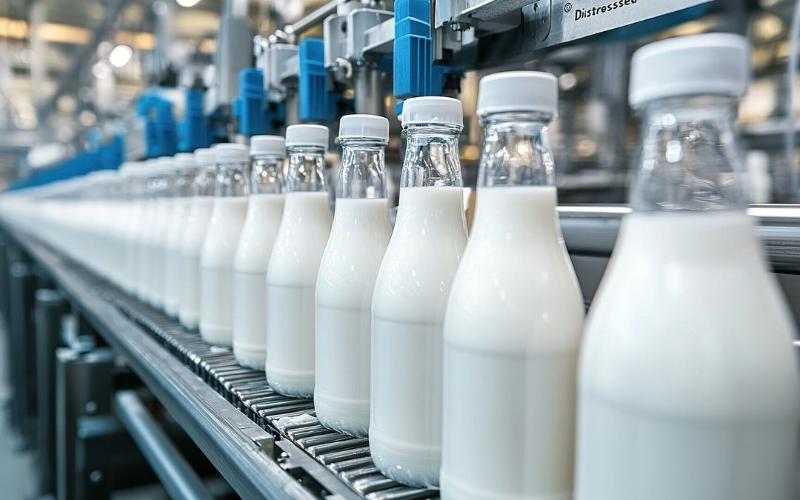Revolutionary Hybrid Rice Infused with Lab-Grown Meat Promises Sustainable Protein Solution
Sourse: The DairyNews
In a groundbreaking development, scientists from Yonsei University in South Korea have crafted rice grains infused with beef and cow fat cells, ushering in the era of lab-grown 'beef rice' as a potentially more sustainable protein source. The researchers, led by Prof Jinkee Hong, coated traditional rice grains in fish gelatin and cultivated them with skeletal muscle and fat stem cells in a laboratory setting.
After a cultivation period of nine to 11 days, the result was rice grains permeated with meat and fat, offering a promising alternative to traditional beef with a substantially lower carbon footprint. Prof Hong, upon cooking and tasting the beef-cultured rice, noted its unique blend of aromas, including a slight nuttiness and umami reminiscent of meat, providing a novel flavor experience.
The hybrid rice, although more brittle than conventional varieties, boasts 8% more protein and 7% more fat. While the rice's appearance remains traditional, it opens the door to a new approach to food supply, combining carbohydrates, protein, and fat within a single grain.
The scientists estimate that this hybrid rice could significantly contribute to sustainable food production. Comparatively, 100g of beef protein production releases nearly 50kg of carbon dioxide, whereas the same quantity from hybrid rice would result in less than 6.27kg of the gas. Additionally, they project that hybrid rice could be more cost-effective, with an estimated cost of $2.23 (£1.80) per kg, as opposed to $14.88 (£12) per kg for beef.
Beyond environmental and economic benefits, the researchers envision the hybrid rice as a potential solution for emergency food supplies in famine-stricken regions and as rations for astronauts and the military. While the initial experiments involved cells from slaughtered hanwoo cattle, the team is actively exploring sustainable cell sources that do not require further animal sacrifice.
However, opinions on the impact of this innovation vary among experts. Some doubt its transformative potential, emphasizing that the end product still primarily consists of rice. Nevertheless, others see it as a promising step towards developing healthier and more environmentally friendly diets, with greenhouse gas emissions significantly reduced and costs minimized.
The hybrid rice, although more brittle than conventional varieties, boasts 8% more protein and 7% more fat. While the rice's appearance remains traditional, it opens the door to a new approach to food supply, combining carbohydrates, protein, and fat within a single grain.
The scientists estimate that this hybrid rice could significantly contribute to sustainable food production. Comparatively, 100g of beef protein production releases nearly 50kg of carbon dioxide, whereas the same quantity from hybrid rice would result in less than 6.27kg of the gas. Additionally, they project that hybrid rice could be more cost-effective, with an estimated cost of $2.23 (£1.80) per kg, as opposed to $14.88 (£12) per kg for beef.
Beyond environmental and economic benefits, the researchers envision the hybrid rice as a potential solution for emergency food supplies in famine-stricken regions and as rations for astronauts and the military. While the initial experiments involved cells from slaughtered hanwoo cattle, the team is actively exploring sustainable cell sources that do not require further animal sacrifice.
However, opinions on the impact of this innovation vary among experts. Some doubt its transformative potential, emphasizing that the end product still primarily consists of rice. Nevertheless, others see it as a promising step towards developing healthier and more environmentally friendly diets, with greenhouse gas emissions significantly reduced and costs minimized.












